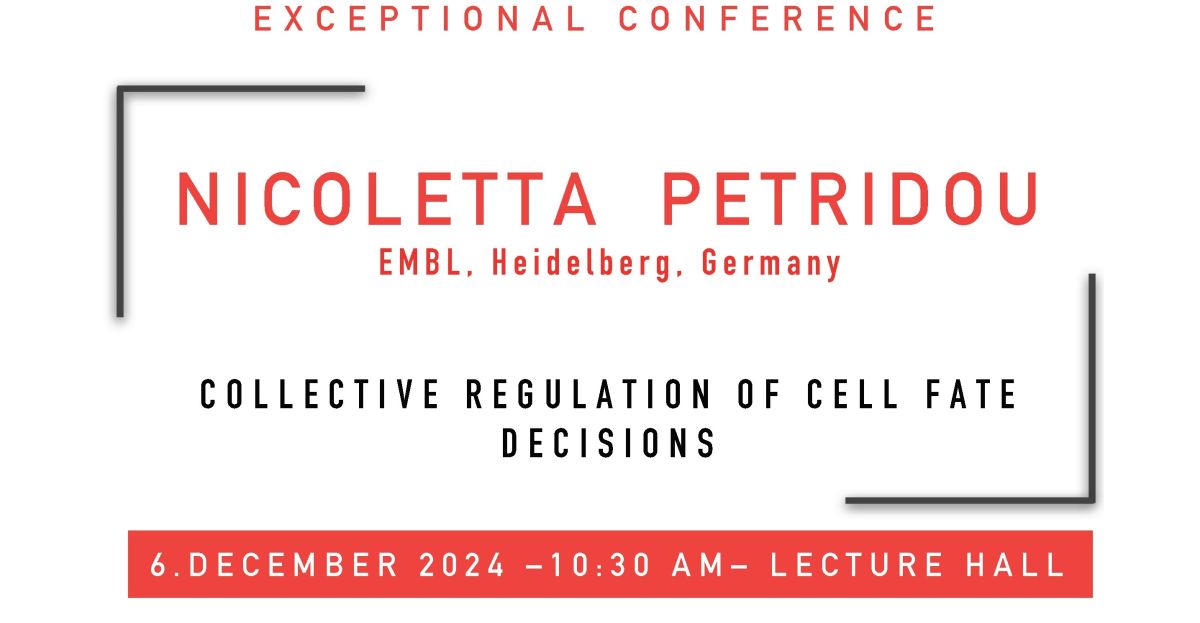
Collective regulation of cell fate decisions
06/12/2024 10:30
Speaker: Nicoletta Petridou, EMBL, Heidelberg, Germany
Abrupt transitions between solid-like and fluid-like tissue material states are essential for tissue shaping. However, if material phase transitions are instructing cell function is still debatable. Here, we show that tissue rigidification directly impacts signal transduction by regulating the length scales and time-scales of morphogen signalling. By combining rigidity percolation theory, reaction-diffusion modelling, quantitative imaging analysis, genetics and optogenetics during zebrafish germ layer formation we uncover that a tissue rigidity phase transition determines the spatiotemporal dynamics of meso-endodermal specification by restricting extracellular Nodal morphogen transport and facilitating its uptake and downstream signalling dynamics. This is a self-generated mechanism of morphogen gradient formation where Nodal itself, besides triggering cell fate specification, increases cell-cell adhesion strength via regulating the expression of planar cell polarity genes. Once adhesion strength reaches a critical point it triggers a rigidity percolation transition which in turn sharply minimises tissue porosity and induces the formation of tricellular contacts, resembling tissue epithelialization. The transient rigidity-driven tissue reorganization negatively feeds back to Nodal signalling both at its length-scales, by sealing the interstitial paths where Nodal is transported and restricting Nodal to the cell layers closer to the source, and at its time-scales, by speeding up its capture/degradation dynamics. This leads to prompt expression of its inhibitor, Lefty, resulting in robust pattern formation. Overall, we reveal how tissue phase transitions regulate precise morphogen information transmission and uncover macroscopic mechanisms of positional information.